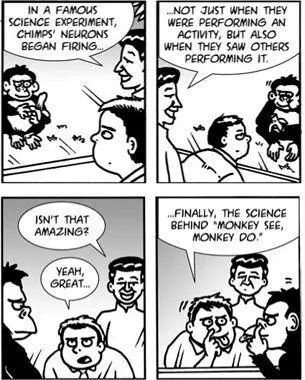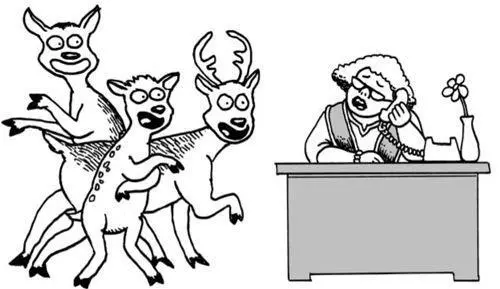Tan, Chade-Meng - Search Inside Yourself - The Unexpected Path to Achieving Success, Happiness (and World Peace)
Здесь есть возможность читать онлайн «Tan, Chade-Meng - Search Inside Yourself - The Unexpected Path to Achieving Success, Happiness (and World Peace)» — ознакомительный отрывок электронной книги совершенно бесплатно, а после прочтения отрывка купить полную версию. В некоторых случаях можно слушать аудио, скачать через торрент в формате fb2 и присутствует краткое содержание. Год выпуска: 2012, Издательство: Harper Collins, Inc., Жанр: Старинная литература, на английском языке. Описание произведения, (предисловие) а так же отзывы посетителей доступны на портале библиотеки ЛибКат.
- Название:Search Inside Yourself: The Unexpected Path to Achieving Success, Happiness (and World Peace)
- Автор:
- Издательство:Harper Collins, Inc.
- Жанр:
- Год:2012
- ISBN:нет данных
- Рейтинг книги:4 / 5. Голосов: 1
-
Избранное:Добавить в избранное
- Отзывы:
-
Ваша оценка:
- 80
- 1
- 2
- 3
- 4
- 5
Search Inside Yourself: The Unexpected Path to Achieving Success, Happiness (and World Peace): краткое содержание, описание и аннотация
Предлагаем к чтению аннотацию, описание, краткое содержание или предисловие (зависит от того, что написал сам автор книги «Search Inside Yourself: The Unexpected Path to Achieving Success, Happiness (and World Peace)»). Если вы не нашли необходимую информацию о книге — напишите в комментариях, мы постараемся отыскать её.
Search Inside Yourself: The Unexpected Path to Achieving Success, Happiness (and World Peace) — читать онлайн ознакомительный отрывок
Ниже представлен текст книги, разбитый по страницам. Система сохранения места последней прочитанной страницы, позволяет с удобством читать онлайн бесплатно книгу «Search Inside Yourself: The Unexpected Path to Achieving Success, Happiness (and World Peace)», без необходимости каждый раз заново искать на чём Вы остановились. Поставьте закладку, и сможете в любой момент перейти на страницу, на которой закончили чтение.
Интервал:
Закладка:
The evidence above confirms something a lot of us have already learned from our own lives: that failure is a common experience. Everybody fails in some major way at some point in their lives, even the greatest and most successful among us, like Michael Jordan. What distinguishes successful people is their attitude toward failure, and specifically, how they explain their own failures to themselves.
Martin Seligman, the highly esteemed father of learned optimism, calls it the “explanatory style”—how we talk to ourselves when we experience a setback. People who are optimistic react to setbacks from a presumption of personal power. They feel that setbacks are temporary, are isolated to particular circumstances, and can eventually be overcome by effort and abilities. In contrast, people who are pessimistic react to setbacks from a presumption of personal helplessness. They feel that setbacks are long lasting, generalized across their lives, and are due to their own inadequacies, and therefore cannot be overcome. This difference in how we explain occurrences to ourselves has a profound impact on our lives. When an optimist suffers a major disappointment, he responds by figuring out how he can do it better the next time. In contrast, a pessimist assumes there is nothing he can do about the problem and gives up.
In a series of famous experiments done in collaboration with MetLife, Seligman discovered that optimistic insurance agents significantly outsell their pessimistic counterparts. 9What’s more, MetLife had a chronic shortage of agents, so Seligman convinced MetLife to hire a special group of applicants who scored just below the cutoff point on the normal screening test but scored high on optimism. This group outsold the pessimists in the group of regular hires by 21 percent in their first year and 57 percent in their second year!
Learning Optimism, Unlearning Pessimism
Happily, optimism is something that can be learned. Ironically enough, optimism starts with being realistic and objective. We naturally pay much more attention to negative than positive occurrences in our lives. For example, if you’re a writer and out of ten reviews of your work, nine are glowing and one is nasty, chances are you will remember that one nasty review more than the glowing ones. This is also true for other aspects of our lives. Barbara Fredrickson, a noted pioneer in positive psychology, found that it takes three positive experiences to overcome a negative one, a 3:1 ratio. 10In general, each negative feeling is three times as powerful as a positive one. If you put that in perspective for a moment, let’s assume you live a life in which you have twice as many happy moments as unhappy ones, a 2:1 ratio. It is like some rich uncle gives you two dollars for every dollar somebody else takes from you. Dude, you win! Objectively, it would look as if you are very lucky and have a very good life. Subjectively, however, since your 2:1 ratio is still well below Fredrickson’s 3:1 ratio, you would think, “My life sucks.” This insight hit me like three Zen sticks hitting my head (yes, a 3:1 stick-to-head ratio).
The first step to learning optimism is becoming aware of our own strong negative experiential bias. It is entirely possible, even likely, that we have much more success than failure in our lives, yet it does not seem that way because we pay too much attention to our failures and too little attention to our successes. Just understanding this can change how you see yourself.
The second step is mindfulness. Learning optimism requires us to create objectivity toward our own experiences and, as mentioned in Chapter 4, mindfulness is the best way to create that objectivity. Specifically, whenever you experience success or failure, first bring mindfulness to your body. Next, bring mindfulness to the emotional experience, remembering that the body is where emotions manifest most vividly. Finally, bring mindfulness to your thoughts. How are you explaining the event to yourself? Do you feel powerful or helpless? How are your thoughts related to your emotions? If this event is an experience of success, bring mindfulness to the tendency to downplay it, or if the event is an experience of failure, bring mindfulness to its disproportionally strong effect on you.
The final step is transformation. When experiencing success, take conscious note of it and accept credit for it. This creates a mental habit of paying due attention to your successes. When experiencing failure, focus on realistic evidence suggesting that this setback may be temporary. If you have thoughts of inadequacy, recall past successes of which you took conscious note and for which you accepted credit. If you find any evidence suggesting reasons for realistic hope, bring attention to it. This sounds a bit like denial, but what it actually does is to increase objectivity by balancing out your natural, strong negative bias. Doing this often creates new mental habits so the next time you experience failure, your mind will quickly find realistic reasons for hope and you can recover more quickly from your setback. And thus, optimism is created.

Great Waves
We end this chapter with a story of a Japanese man who overcame his fear and failure by discovering his inner resilience.
In the early days of the Meiji era there lived a well-known wrestler called O-nami, Great Waves .
O-nami was immensely strong and knew the art of wrestling. In his private bouts he defeated even his teacher, but in public, he was so bashful that his own pupils beat him .
O-nami felt he should go to a Zen master for help. Hakuju, a wandering teacher, was stopping in a little temple nearby, so O-nami went to see him and told him of his great trouble .
“Great Waves is your name,” the teacher advised, “so stay in this temple tonight. Imagine that you are those billows. You are no longer a wrestler who is afraid. You are those huge waves sweeping everything before them, swallowing all in their path. Do this and you will be the greatest wrestler in the land.”
The teacher retired. O-nami sat in meditation trying to imagine himself as waves. He thought of many different things. Then gradually he turned more and more to the feeling of waves. As the night advanced the waves became larger and larger. They swept away the flowers in their vases. Even the Buddha in the shrine was inundated. Before dawn, the temple was nothing but the ebb and flow of an immense sea .
In the morning, the teacher found O-nami meditating, a faint smile on his face. He patted the wrestler’s shoulder. “Now nothing can disturb you,” he said. “You are those waves. You will sweep everything before you.”
The same day O-nami entered the wrestling contests and won. After that, no one in Japan was able to defeat him . 11

“Watch it, boys, here comes the new coach, and he looks like a mean sonofagun!”
CHAPTER SEVEN

Empathy and the Monkey Business of Brain Tangos
Developing Empathy Through Understanding and Connecting with Others
Seek first to understand, then to be understood.
—Stephen R. Covey

Интервал:
Закладка:
Похожие книги на «Search Inside Yourself: The Unexpected Path to Achieving Success, Happiness (and World Peace)»
Представляем Вашему вниманию похожие книги на «Search Inside Yourself: The Unexpected Path to Achieving Success, Happiness (and World Peace)» списком для выбора. Мы отобрали схожую по названию и смыслу литературу в надежде предоставить читателям больше вариантов отыскать новые, интересные, ещё непрочитанные произведения.
Обсуждение, отзывы о книге «Search Inside Yourself: The Unexpected Path to Achieving Success, Happiness (and World Peace)» и просто собственные мнения читателей. Оставьте ваши комментарии, напишите, что Вы думаете о произведении, его смысле или главных героях. Укажите что конкретно понравилось, а что нет, и почему Вы так считаете.







![Chade-Meng Tan - Search Inside Yourself - Increase Productivity, Creativity and Happiness [ePub edition]](/books/703803/chade-thumb.webp)



